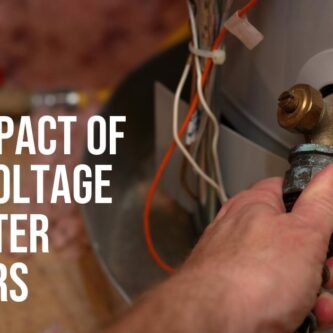LED bulbs have become increasingly popular in recent years due to their energy efficiency, long lifespan, and low maintenance costs.
However, it’s important to understand their voltage rating and the effects of high voltage on them.
High voltage can damage LED bulbs by reducing their performance and lifespan. When exposed to high voltage, the LED chip can overheat, causing the phosphorus coating to degrade, leading to reduced light output and a shorter lifespan.
In this article, we will explore whether high voltage can damage LED bulbs, the effects of high voltage on LED bulbs, factors that affect LED bulbs voltage rating, and how to protect LED bulbs from high voltage damage.
Understanding LED Bulbs Voltage Rating
Voltage rating is an important factor to consider when dealing with LED bulbs. It refers to the maximum voltage that the LED bulb can handle without causing damage.
Typically, LED bulbs have a voltage rating of between 110V to 120V, although this can vary depending on the manufacturer and model.
LED bulbs voltage rating is measured in alternating current (AC). Therefore, it’s important to ensure that the voltage rating of the LED bulb matches the AC voltage of the power supply.
are led lights voltage sensitive
Yes, LED lights are voltage sensitive. They require a specific voltage range to operate efficiently and without damage.
Most LED lights have a voltage rating of 110V to 120V, although this can vary depending on the manufacturer and model.
It’s important to ensure that the voltage rating of the LED light matches the AC voltage of the power supply to prevent damage or reduced performance.
Additionally, high voltage can cause overheating and pose a safety hazard, so it’s important to take steps to protect LED lights from high voltage damage.
Effects of High Voltage on LED Bulbs
Exposing LED bulbs to high voltage can have various negative effects on their performance and lifespan. The effects of high voltage on LED bulbs include:
- Reduced Lifespan: High voltage can reduce the lifespan of LED bulbs. When exposed to high voltage, the LED chip can overheat, causing the phosphorus coating to degrade. This degradation can lead to reduced light output and a shorter lifespan.
- Reduced Performance: High voltage can also reduce the performance of LED bulbs. Overheating can cause the LED bulb to flicker, emit a lower light output, or even fail altogether.
- Safety Hazard: High voltage can also pose a safety hazard. Overheating can cause the LED bulb to become very hot, increasing the risk of fire or burns.
Read also my article: The Electrical Hazards of Faulty Appliances.
Factors That Affect LED Bulbs Voltage Rating
The voltage rating of LED bulbs can vary depending on several factors, including:
- Manufacturing Process: The manufacturing process can affect the quality of the LED chip and its voltage rating. High-quality materials and manufacturing processes can result in LED bulbs with higher voltage ratings.
- Quality of Materials Used: The quality of the materials used to manufacture LED bulbs can also affect their voltage rating. Using high-quality materials can result in LED bulbs with a higher voltage rating.
- Environmental Factors: The environment in which LED bulbs are used can also affect their voltage rating. High temperatures can cause LED bulbs to degrade faster, reducing their voltage rating.
How to Protect LED Bulbs from High Voltage Damage
To protect LED bulbs from high voltage damage, you can take several steps, including:
- Using Voltage Regulators: Voltage regulators can help regulate the voltage of the power supply to ensure that it matches the voltage rating of the LED bulb. This can help prevent high voltage from damaging the LED bulb.
- Installing Surge Protectors: Surge protectors can help protect LED bulbs from power surges that can occur during lightning strikes or power outages. They work by diverting excess voltage to the ground, preventing it from damaging the LED bulb.
- Choosing LED Bulbs with Higher Voltage Rating: Choosing LED bulbs with a higher voltage rating than required can also help protect them from high voltage damage. This is because LED bulbs with a higher voltage rating can handle more voltage without becoming damaged.
Conclusion
In conclusion, high voltage can damage LED bulbs, reducing their performance and lifespan. Understanding the voltage rating of LED bulbs is crucial in protecting them from high voltage damage.
Factors that affect LED bulbs voltage rating include the manufacturing process, quality of materials used, and environmental factors.


